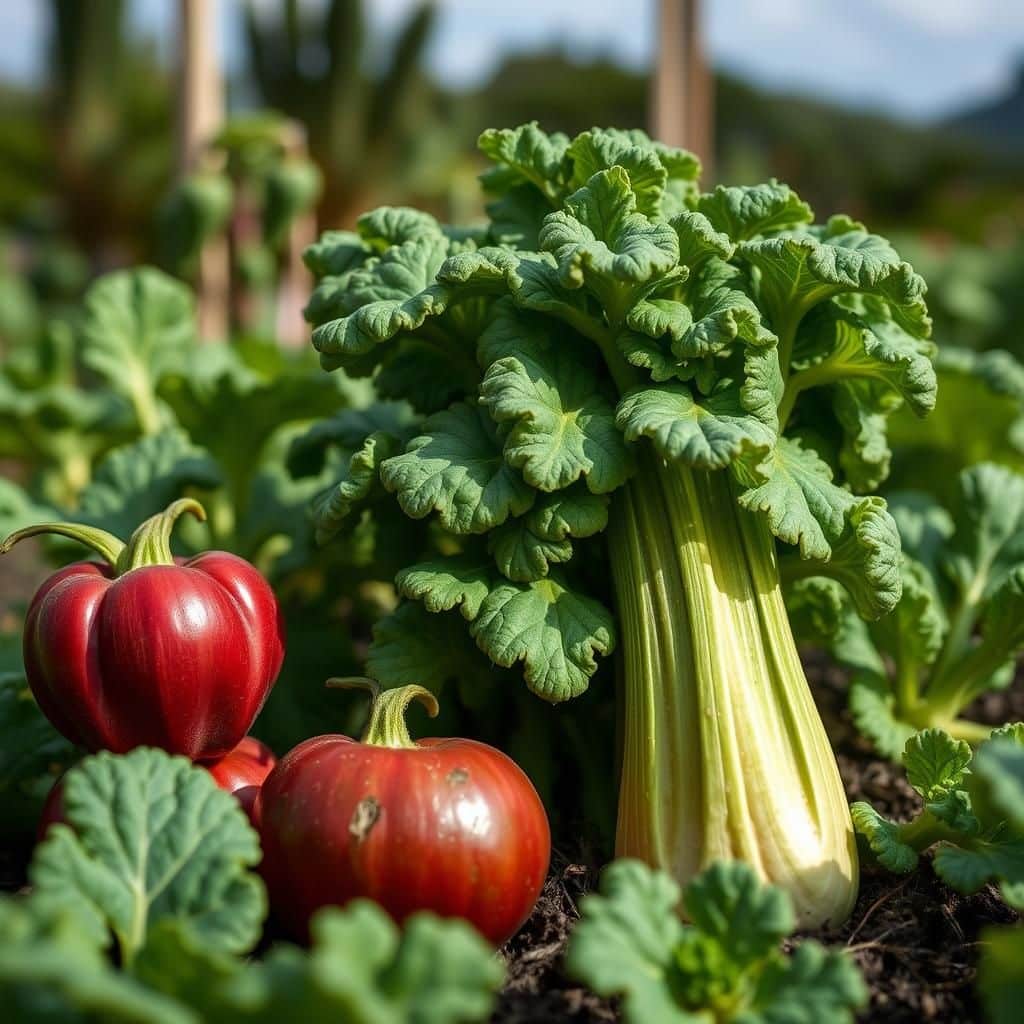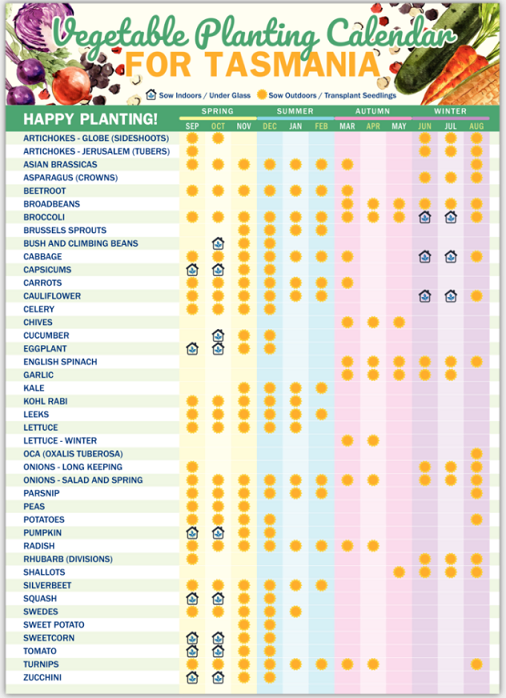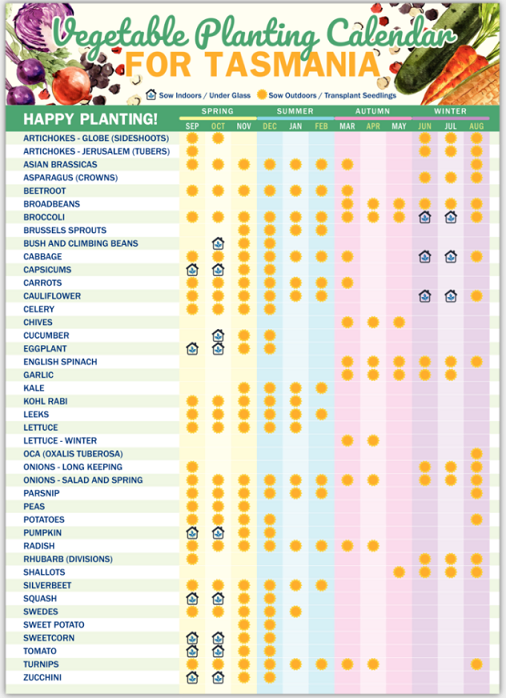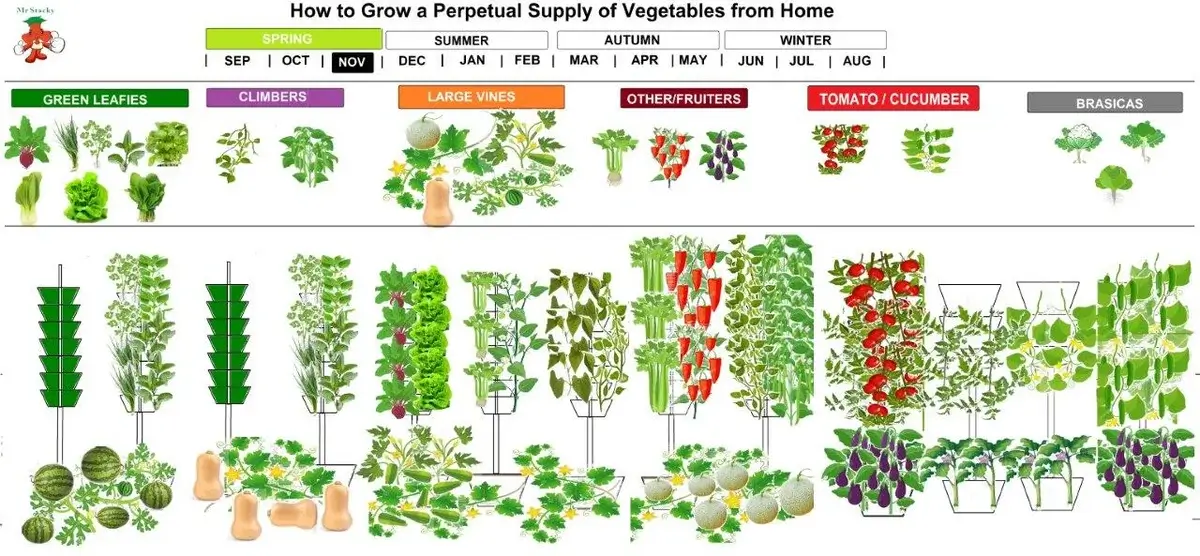Top 10 Vegetables to Grow in Tasmania for a Thriving Garden

Creating a thriving garden in Tasmania can be a rewarding endeavor, especially when you choose the right vegetables to grow. With its unique climate and rich soil, Tasmania offers a variety of options for both novice and experienced gardeners. In this article, we will explore the top 10 vegetables that flourish in Tasmanian gardens, taking into account factors such as growing conditions, seasonal availability, and nutritional value. Whether you're aiming for a bountiful harvest or simply looking to enhance your culinary experiences, these vegetables will help you cultivate a vibrant and productive garden.
Best Vegetables to Grow in Tasmania
Growing vegetables in Tasmania can be a rewarding experience due to the region's unique climate, which includes cool temperatures and ample rainfall. The best vegetables to cultivate are typically those that thrive in temperate conditions and can withstand the occasional frost. Popular choices include potatoes, carrots, cabbage, and broccoli, as they adapt well to the soil and climate. By utilizing local knowledge and practices, Tasmanian gardeners can successfully grow a diverse range of vegetables, ensuring a bountiful harvest throughout the growing season.
Climate Considerations for Vegetable Gardening in Tasmania
Tasmania's climate is characterized by mild summers and cool winters, with varying rainfall across different areas. This means that gardeners need to consider planting times carefully to maximize their yield. Vegetables that are sown in the early spring, such as peas and lettuce, can benefit from the cool weather, while tomatoes and other heat-lovers should be planted after the last frost. Understanding local microclimates, such as sheltered spots that retain warmth, can also significantly affect which vegetables will thrive.
Soil Quality and Preparation
The success of vegetable gardening in Tasmania heavily relies on the quality of the soil. Tasmania typically has rich, fertile soils, but specific locations may require amendments to ensure optimal growth. Testing the soil's pH level and nutrient content can help gardeners make informed decisions about necessary additions such as compost or fertilizers. Preparation might include tilling the soil, adding organic matter, and ensuring proper drainage, which can significantly improve the health of the plants.
Seasonal Vegetable Choices
Timing is crucial when selecting vegetables for the Tasmanian garden. Cool-season crops like spinach, kale, and radishes can be planted in early spring and again in late summer for a fall harvest. On the other hand, warm-season crops such as zucchini, corn, and beans should be sown after the last frost without fear of temperature extremes. This knowledge allows gardeners to create a diverse planting schedule that maximizes the use of the growing seasons.
Organic Gardening Practices
Many Tasmanian gardeners are turning to organic gardening methods, which promote sustainability and healthier produce. Techniques such as crop rotation, companion planting, and natural pest control help maintain soil health and minimize the use of synthetic chemicals. By incorporating these practices, gardeners not only enhance the biodiversity within their gardens but also contribute to a healthier local ecosystem, resulting in more robust vegetables.
Common Pests and How to Manage Them
Managing pests is essential for a successful vegetable garden in Tasmania, where certain insects can threaten crops. Common pests include aphids, cabbage moths, and slugs. Implementing strategies like using row covers, introducing beneficial insects like ladybugs, and regularly monitoring plants can help control these pests. Educating oneself about the specific threats to their chosen vegetable varieties allows gardeners to adopt more effective management techniques, ensuring a healthier harvest.
| Vegetable | Best Season | Soil Type |
|---|---|---|
| Potatoes | Spring & Summer | Well-drained, loose soil |
| Carrots | Spring & Fall | Loamy, sandy soil |
| Kale | Spring & Fall | Rich, fertile soil |
| Tomatoes | Summer | Warm, nutrient-rich soil |
| Broccoli | Spring & Fall | Fertile, well-drained soil |
What vegetables to plant in Tasmania?

Climate Considerations for Vegetable Planting
In Tasmania, the climate plays a significant role in determining which vegetables can be successfully grown. The island experiences a range of conditions from cool maritime climates to more temperate weather, affecting growing seasons and crop choices. It is essential to consider the following factors:
- Temperature: Understanding the average temperatures during the growing season helps identify suitable vegetables.
- Frost Dates: Knowing the last frost date in spring and the first frost date in autumn can help in planning planting schedules.
- Rainfall: Tasmanian rainfall varies significantly; thus, selecting vegetables that can tolerate local moisture levels is crucial.
Best Vegetables to Grow in Tasmania
Several vegetables thrive in Tasmania due to its unique climate. Some of the most suitable options include:
- Potatoes: Tasmania's soils and climate are ideal for growing a variety of potatoes, including early and maincrop types.
- Carrots: These root vegetables grow well in loose, rich soil and are typically sown in early spring.
- Broccoli: As a cool-weather crop, broccoli can be planted in early spring or late summer for an autumn harvest.
Seasonal Planting Guide
Understanding the best times to plant different vegetables is essential for a successful garden in Tasmania. Here’s a seasonal guide:
- Spring Planting: Ideal for leafy greens like lettuce, spinach, and early varieties of peas.
- Summer Planting: Focus on heat-loving vegetables such as tomatoes, capsicums, and cucumbers.
- Autumn Planting: Kale, Brussels sprouts, and winter squash can be planted for a late season harvest.
Soil Preparation and Nutrition
Proper soil preparation is vital for the growth of healthy vegetables. The following practices can improve soil quality in Tasmania:
See also:
- Testing Soil: Conducting a soil test to check pH and nutrient levels can guide necessary amendments.
- Adding Organic Matter: Incorporating compost or well-rotted manure enhances soil fertility and structure.
- Crop Rotation: Rotating vegetable families can prevent soil depletion and improve yield.
Pest Management Strategies
Effective pest management is important to protect your vegetable garden. Here are some strategies suitable for Tasmania:
- Companion Planting: Planting certain species together can deter pests and promote healthier growth.
- Natural Predators: Encouraging beneficial insects, such as ladybugs, can help keep pest populations in check.
- Organic Pesticides: Using organic solutions can help manage pest issues without harming the environment.
What crops can be grown in Tasmania?

Tasmania, known for its diverse climates and fertile soils, offers a range of agricultural opportunities. The state experiences a temperate climate with well-defined seasons, which allows for the cultivation of various crops, both traditional and unique to the region. Here’s an overview of the major crops that can be grown in Tasmania.
Fruits
Tasmania is famous for its high-quality fruits, thanks to its cool climate and long growing season. The diverse topography contributes to varied microclimates, allowing for a wide range of fruit production.
- Apples: Tasmania produces a significant amount of apples, recognized for their flavor and quality.
- Cherries: The state is known for cherry orchards, particularly in the Derwent Valley.
- Berries: Various berries, including blueberries, raspberries, and strawberries, thrive in the region’s climate.
Vegetables
The cool climate of Tasmania is conducive to the growth of a variety of vegetables. This includes both staple crops and specialty vegetables popular in markets.
- Potatoes: Tasmania is renowned for its premium potatoes, particularly in regions like the north.
- Carrots: The state produces vibrant, sweet carrots, adding to the local vegetable export.
- Cabbage and leafy greens: Varieties such as lettuce and kale flourish due to the cooler temperatures.
Cereals and Grains
While Tasmania is not as prominent for grain production as mainland Australia, it still contributes to the cereal and grain sector.
- Barley: This is one of the main cereal crops grown, used for both livestock feed and brewing purposes.
- Wheat: Wheat is grown primarily for local consumption and some export.
- Oats: Due to its suitability in cooler climates, oats are also cultivated in Tasmania.
Herbs and Specialty Crops
Tasmania is also gaining recognition for its extensive variety of herbs and specialty crops that appeal to both local and international markets.
- Lavender: Grows well in Tasmania’s climate, often used in essential oils and cosmetics.
- Truffles: The state is becoming famous for truffle production, particularly in the north.
- Organic herbs: The demand for organic produce has led to a boom in the cultivation of herbs like basil, mint, and parsley.
Wine Grapes
Tasmania is renowned for its wine production, leveraging its unique climate to grow high-quality grapes for various wine styles.
- Pinot Noir: This grape variety flourishes in Tasmania’s cool climate, leading to award-winning wines.
- Chardonnay: The state produces exceptional Chardonnay, contributing to its reputation for quality wines.
- Riesling: Increasingly recognized, Riesling grapes are cultivated for their aromatic qualities.
What fruit grows best in Tasmania?

Tasmania, with its unique climate and soil conditions, provides an excellent environment for the cultivation of various fruits. Among these, apples stand out as the most prominent fruit grown in the state. The cool climate, abundant rainfall, and fertile soils contribute to the quality and taste of Tasmanian apples, making them highly sought after in both domestic and international markets.
Apple Varieties Thriving in Tasmania
In Tasmania, a variety of apple types flourish due to the region's favorable growing conditions. Some of the most popular varieties include:
- Fuji: Known for its crisp texture and sweet flavor.
- Granny Smith: Famous for its tartness, ideal for baking and cooking.
- Royal Gala: Celebrated for its sweetness and vibrant color.
Climate Factors Influencing Fruit Growth
Tasmania's temperate climate plays a crucial role in fruit cultivation. The distinct seasons allow for a wide range of fruit development. Key climate characteristics include:
See also:
- Cool temperatures: Prevents early fruit spoilage and promotes flavor development.
- Consistent rainfall: Ensures the soil retains moisture, benefiting root systems.
- Long daylight hours during summer: Enhances photosynthesis and fruit maturation.
Soil Quality in Tasmania
The soil composition in Tasmania is diverse, which greatly contributes to the successful cultivation of fruits. It features:
- Fertile volcanic soils: Rich in nutrients which promote healthy growth.
- Good drainage: Prevents root rot and encourages robust root development.
- pH balance: Optimum acidity levels suitable for apple trees and other fruits.
Impact of Local Farming Practices
Tasmanian farmers implement various agricultural practices to enhance fruit production. These practices include:
- Organic farming: Reduces chemical exposure, leading to healthier fruit.
- Integrated pest management: Balances pest control while minimizing environmental impact.
- Use of cover crops: Enhances soil health and biodiversity.
Market Demand for Tasmanian Fruit
There is a growing market demand for Tasmanian fruit, particularly apples. Factors influencing this demand are:
- Quality and taste: Renowned for their sweetness and physical attributes.
- Export opportunities: Increasing international interest in Tasmanian produce.
- Health trends: Rising consumer preferences for fresh and organic produce.
What vegetables can you grow all year round in Australia?

In Australia, the climate varies significantly across regions, which influences the types of vegetables that can be grown throughout the year. However, several vegetables are adaptable and can be cultivated all year round in many parts of the country. Here are some of the most suitable options:
1. Leafy Greens
Leafy greens are among the easiest vegetables to grow all year round due to their quick growth cycles and resilience. They thrive in a variety of conditions and can even tolerate some frost.
- Spinach: This nutrient-rich vegetable can be sown in both cool and warm seasons, making it ideal for year-round cultivation.
- Kale: A hardy green that is packed with vitamins, kale can survive colder temperatures and continues to produce throughout the year.
- Lettuce: With many varieties available, lettuce can be grown at different times, ensuring a constant supply of fresh leaves.
2. Root Vegetables
Root vegetables are excellent choices for year-round planting, as they can be harvested in stages according to growing conditions and climate.
- Carrots: These can be sown at various times and harvested continuously, especially in milder climates.
- Beetroots: They are easy to grow and resilient, making them perfect for year-round cultivation in many areas.
- Radishes: Known for their quick growth, radishes can be sown throughout the year and harvested in just a few weeks.
3. All-Season Herbs
Certain herbs can also thrive year-round, providing flavor and nutrition to dishes while being relatively easy to care for.
- Basil: While basil prefers warmer weather, it can be grown indoors or in greenhouses during cooler months.
- Thyme: A hardy herb, thyme can tolerate varying climates and is often used fresh or dried in cooking.
- Mint: This vigorous herb can be cultivated year-round and is known for its refreshing flavor in various dishes and drinks.
4. Brassicas
Brassicas, also known as cruciferous vegetables, can be planted in cycles throughout the year due to their adaptability.
- Cabbage: Available in different varieties, cabbage can be grown in cooler months and harvested throughout the year.
- Broccoli: This nutrient-dense vegetable can be grown in both cooler and moderate climates, yielding continuous harvests.
- Cauliflower: Similarly to broccoli, cauliflower can thrive in cooler conditions, making it suitable for year-round cultivation.
5. Legumes
Legumes are beneficial to the soil as well as being nutritious for consumption. Some types can be grown throughout the year depending on the region.
- Beans: Varieties like bush beans can be grown in warm conditions, providing continuous harvests in the right climate.
- Peas: These thrive in cooler weather and can be planted in succession for ongoing production.
- Chickpeas: In warmer regions, chickpeas can be a productive crop that offers harvests all year round.
Questions from Our Readers
What are the best vegetables to grow in Tasmania's climate?
The best vegetables to grow in Tasmania's climate include cabbage, carrots, potatoes, and broccoli. These crops thrive in the cooler temperatures and the longer growing season that Tasmania offers, allowing gardeners to enjoy a bountiful harvest throughout the year.
When is the ideal planting time for vegetables in Tasmania?
The ideal planting time for vegetables in Tasmania typically falls between the late spring and early summer months, specifically from October to December. This timing allows plants to benefit from the warmer weather and increased sunlight, ensuring a successful and healthy growth cycle.
See also:
Can I grow herbs alongside vegetables in Tasmania?
Yes, you can grow herbs alongside vegetables in Tasmania. Popular options include basil, parsley, and cilantro, which can thrive in the same conditions as many vegetables. Planting herbs can also help to repel pests and enhance the overall biodiversity of your garden.
What challenges might I face when growing vegetables in Tasmania?
Some challenges of growing vegetables in Tasmania include variable weather conditions, such as sudden frosts and heavy rainfall. Gardeners may also have to contend with pests and diseases that can affect their crops. Implementing proper care and seasonal planning can help mitigate these issues effectively.

If you want to read more articles like Top 10 Vegetables to Grow in Tasmania for a Thriving Garden, we recommend you check out our Gardeners category.
Leave a Reply
Related Articles